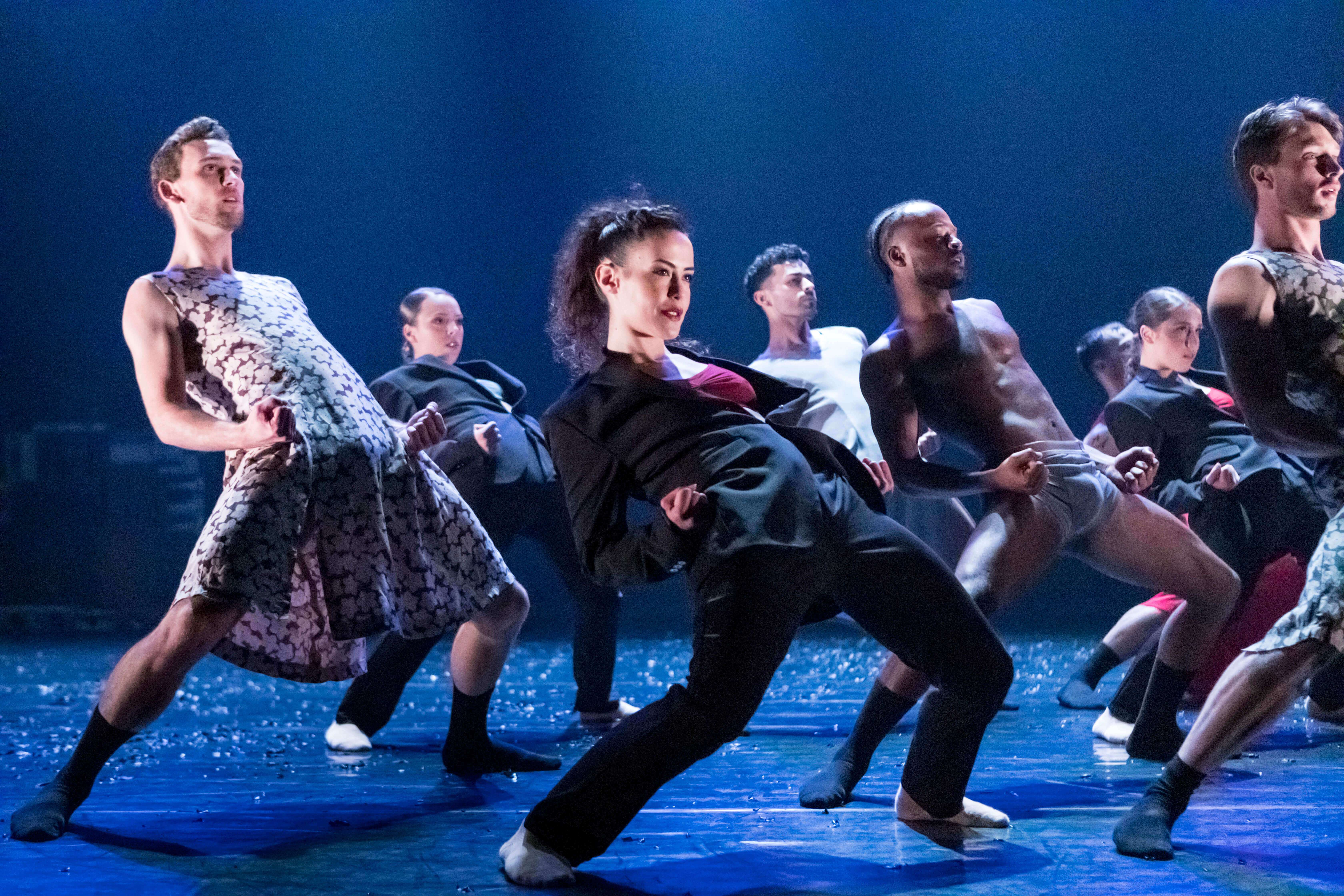Somewhere between guts and skin.
This evening of the Kamea Dance Company – LEGENDS, which was composed of two works by well-known artists, is going to be a landmark in the company’s journey. It was an impressive evening that included strong works excellently performed by a team of dancers from Kamea, which is also reinforced by dancers from different countries.
The creators are: the German choreographer Marko Goecke – whose work THIS SKIN opened the evening. After the break, Johan Inger’s work came up: RAIN DOGS. These are two very different works, but their matching for one evening had the right thought. Something happened that does not normally happen, because it is found in a different layer than that which lies in the movement and perception of the body, but in a subcutaneous layer that is not visible to the eye and is found in the dominant musical choices that supported what happened on stage. The power of the sharp, hoarse music is that it creeps into the vein. It is the music of Patti Smith and Keith Jarrett that accompanied the first work and the music of Tom Waits in the second.
From the moment the stage was revealed, immersed in a white-gray mist, a single dancer stood in front of it, his feet planted on the ground and his body charged. From here, his limbs begin to perform a disjointed, sharp, controlled movement, while discharging and charging energies that consume the air around him. The considerable powers he radiates are mesmerizing and there is still something mysterious about him due to the high backlight that penetrates through the fog and leaves his face veiled.
During a relatively long solo, he basically schematically sums up Goecke’s language, always precise, rhythmic, leaving a feeling of loop-like movements in a multitude of variants. In a certain sense, the razor-sharp lines contain an illusion of mechanical behavior, but Jarret’s playing, Smith’s composition and singing indicate that the event is connected by a cable to a deep human layer, there between the guts and the skin.
Later on, more dancers received individual pieces and a few sessions for twos and threes and in between were interspersed with relatively short group photos of all the band members, most of them relying on unison. More than once the collective unison comes to enhance parts of a piece by using the mass effect. Here, the transition sections made a change and rather to moderate the intensities and tension that had accumulated, similar to neutralizing the palate in wine tasting.
During the performance of the piece, it seemed that all the members of the company came to devour the stage and therefore, you could feel the intensity of the energy of the entire group and all of them together made the company better.
All the male performers who danced the solo pieces that fell into their laps did an impressive job, although no one surpassed the dancer who performed the solo that opened the piece – Sagi Belelli – who filled the stage with his power and passion.
After a break, it was the turn of the work of the Swedish choreographer Johan Inger. RAIN DOGS, Inger makes easy work for the viewer, so to speak, and clarifies the popular themes that did not guide him in the work. He explained that he is not trying to create a place where human relations, identity and gender are explored. How refreshing. His work draws inspiration from the composition and music of Tom Waits, which is found in Waits’ album of the same name. I’m attaching individual lines from the song in free translation: Oh, how we danced and swallowed the light/ That’s how the dreams matured/ Oh, how we danced all the lights/ We were always crazy.
Inger’s choice of Waits comes from a place similar to that of Goecke who chose Patti Smith’s music and both of them pad their very different works with a burnt, painful component, where the visible reality does not tell the whole story.
The dance reveals a stage and in its depth on the left side there is a system of electronic devices, perhaps it is audio systems. The first dancer who goes on stage holds a tape over his shoulder, listens to the music and falls to its rhythms. There’s jazz in the air. There are smells of Americana.
The dancers stand in a row at the back, dancing together on the spot in informal clothing reminiscent of the seventies, and each time one of them steps aside to his own ricochet and immediately returns to his place.
Without going into the description of the dance, it will be said that the dance is divided into several moves, some of which contradict something from Inger’s words, which explains what is not in the piece. The first section is briefly described above. In the second segment, dancers go backstage each at a different time and return dressed only in their underwear. In the last photo, the boys wear the same dresses as the girls initially wore, while the girls return dressed in men’s suits.
It should be said that halfway through, a white toy dog was revealed in the center of the stage, completely alone. Is this how Inger imagines one of the ‘rain dogs’ from Waits’ poem.
Inger has a rich imagination and a structured aesthetic sensibility and taste as well as a fascinating control in building alternating compositions and almost invisible transitions that are made casually and probably stem from those who are no longer impressed by virtuosity for its own sake. Towards the end comes a gentle and so unexpected visual touch that comes after an essentially concrete work. On the back screen are projected images of clouds or smoke or sea waves in pink and white tones that create their own spectacular sand, flowing here and there, changing before our eyes and accompanying us until the end. Bravo!
March 13, 22

